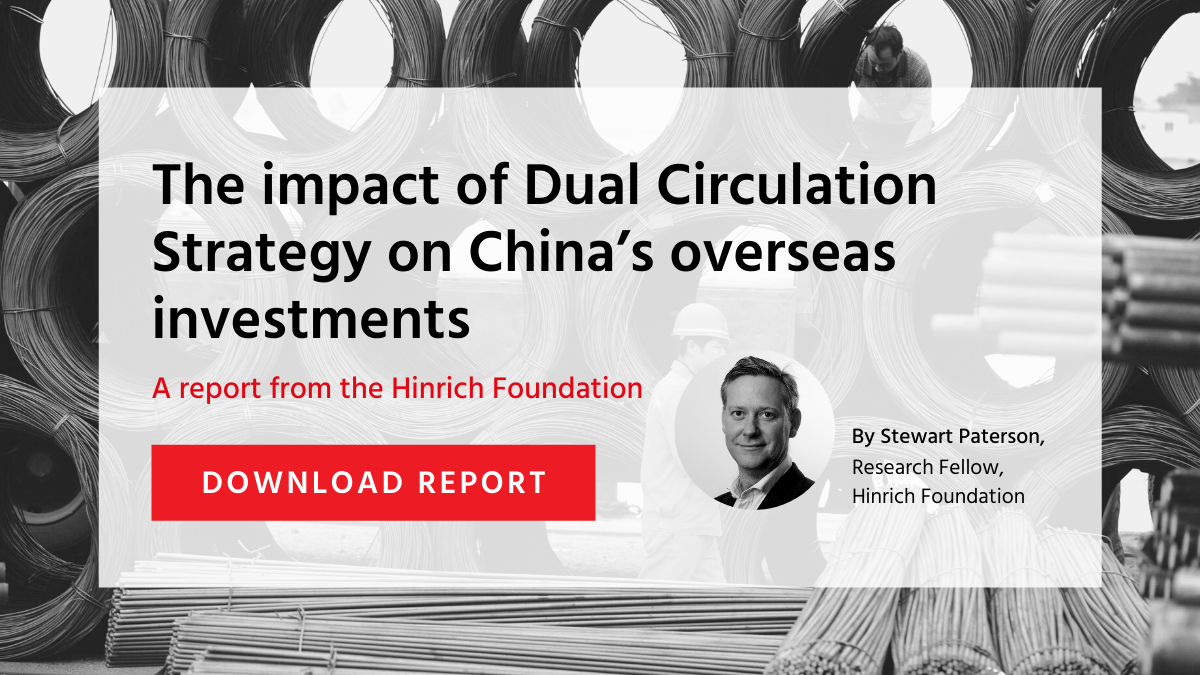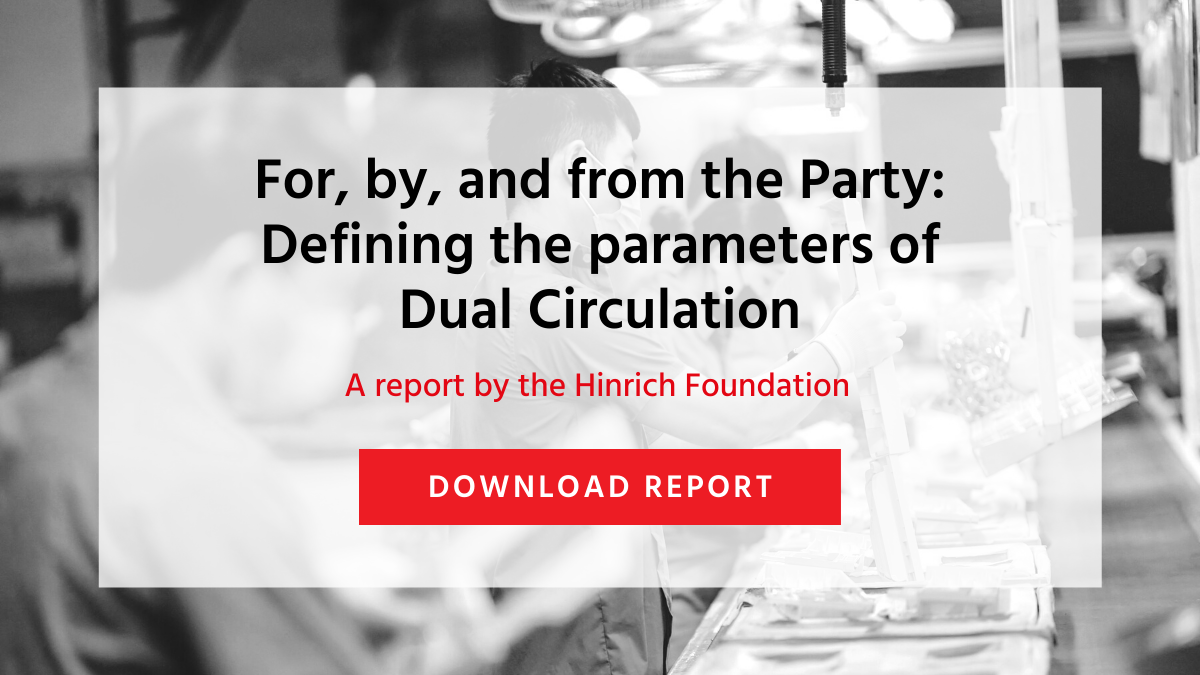US-China trade
The impact of Dual Circulation Strategy on China’s overseas investments
Published 08 February 2022
The international dimension to China's Dual Circulation Strategy can be summarized as the use of the country's domestic savings pool to achieve its geopolitical goals by economic means. This is unlikely to go unchallenged by market economies, and the global trading system will likely suffer further stress as the politicization of every aspect of international economic engagement deepens.
A recurring policy theme under President Xi Jingping, “National Rejuvenation” envisions a Sinocentric world and is the guiding principle of China’s “Grand Strategy”, under which sits Dual Circulation Strategy (DCS) in the policy hierarchy. DCS is the economic dimension to that strategy. The fourth in the Hinrich Foundation series on this critical new orientation for China, this report will focus on the activities of the country's economic actors overseas.
Divided into five sections, the report starts with an examination of the tension between China’s domestic economic situation and its desire for economic stability and growth, and the drive for “National Rejuvenation”. The report then analyses the size and disposition of China’s outbound capital flows to ascertain the country’s potential economic power – and its ambition to make the global order more suited to the national interest.
The third section looks at the economic actors internationalizing China’s balance sheet and the geographical disposition of China’s external circulation through the prism of foreign direct investment (FDI) and overseas contractor activity.
The fourth section offers a sectoral breakdown of the activities and their alignment with China’s goals for security and national rejuvenation. The analysis is then applied to draw some conclusions about the implications of DCS on the future of Chinese MNCs.
Download the other papers in this Dual Circulation Strategy series by Research Fellow Stewart Paterson:
© The Hinrich Foundation. See our website Terms and conditions for our copyright and reprint policy. All statements of fact and the views, conclusions and recommendations expressed in this publication are the sole responsibility of the author(s).






